Spanish Food: A Guide to Spanish Cuisine and Spanish Eating Culture — with Lots of Spanish Food Words
Can you eat your way to fluency in Spanish? Maybe not, but you can learn all about Spanish food culture, and how to talk about food in Spanish!
If you’re a foodie, then you know that food is the way to the heart of both a person and a culture! Even in your hometown, there may be a unique food culture, type of food, food etiquette or eating habits that everyone enjoys.
It’s an expression of where you live. County Cavan, Ireland, where I’m from, has its very own annual food festival to showcase unique local food.
Spanish cuisine is no exception. Food is a big part of culture in Spain, and it’s often an expression of love and friendship with others.
Everyone likes talking about food; it’s one of those universal small talk topics that most people feel comfortable with. Food vocabulary comes up everyday in conversations!
So, understanding Spanish food words and the Spanish food culture goes a long way.
That’s why there’s no yummier way to learn Spanish than through food. Exciting, right? You can have your cake and talk about it, too!
First thing’s first: the word for “food” in Spanish is comida.
Table of contents
Hungry yet? You will be once we’re done!
Food Culture in Spain
Food habits in Spain are renowned for being quite unique. Eating and drinking are a big deal in Spanish culture, and bars are everywhere.
There’s always an excuse to grab some tapas (small-portioned appetisers) and socialise at the local drinking hole! Most bars serve as restaurants and hangouts where Spaniards can enjoy fútbol (“football”, or “soccer” in the US) together.
But the biggest difference in Spain’s food culture is how and when they eat.
Spanish Manners & Eating Habits
Eating habits in Spain have largely centered around work life… and I do mean life.
Currently, Spain runs on an 11-hour workday, although that’s changing in some areas. The workday starts around 9 am and doesn’t finish until 8 pm. Because of that, meal times are much farther apart than what most people expect.
El Desayuno (“Breakfast”)
In the morning, Spaniards enjoy a light desayuno (“breakfast”) before heading to work. It often consists of café con leche (“coffee with milk”) and a pastry or roll with jam, like bollos (“sweet rolls”).
Because of the very long gap between el desayuno and la comida (literally, “the food” but means “lunch” in this context), many people will often take a break mid-morning for a snack. (Much like the hobbit eating habit of Second Breakfast or Elevenses.)
This snack usually consists of tapas, like the famous tortilla de patata (“potato omelette”).
La Comida (“Lunch”)
Also called el almuerzo, Spaniards strongly believe that food should be thoroughly enjoyed, so lunch is no rushed affair. In fact, when workers go to lunch around 2 pm, the workplace typically shuts down for two or three hours so Spaniards can go feast.
In Spain, lunch is the largest meal of the day and has three or more courses. It’s even common to drink wine at lunch. It’s often included in the meal price!
Common lunch foods in Spanish culture include a soup or pasta, a protein-filled dish of meat or fish, salad, and dessert such as flan (vanilla custard) or simply fruit. Coffee, wine, and brandy are common drinks at lunch. You’ll almost always find plenty of bread at every meal to wipe the plate clean.
After a long lunch, it’s common to take a siesta or short nap. In some areas of Spain, siestas are even protected by law. In bigger cities like Madrid, however, this isn’t very common anymore.
(I’ve found that including siestas in my daily routine helped me focus better!)
La Merienda (“Snack”)
Because of the long work day, it’s not unusual to stop and grab another snack around 5 or 6 pm.
La merienda is like afternoon tea in England. It consists of something small such as bread, salami, fruit, cheese, chocolate, or other small finger foods.
La Cena (“Dinner/Supper”)
Since the workday finishes around 8 pm, dinner is eaten around 9 or 10 pm. It’s often small and simple compared to lunch, especially because it’s so late.
Arroz cubano is a common meal at dinner, which is a fried egg, rice, and a tomato sauce.
Dinner still usually includes a salad and small dessert of fruit, cheese, or flan.
Bocadillo de Medianoche (“Midnight Snack”)
The average Spaniard goes to bed around midnight every day, so a bocadillo de medianoche is not unheard of!
Churros are often picked up on the way home from a night out socialising at the bar. Or they’ll enjoy a nice, warm cup of Spanish hot chocolate.
Buen Provecho! (“Enjoy Your Meal!”)
In a restaurant, when the waiter delivers your meal to your table, you’re likely to hear ”Buen Provecho!”, which means “Enjoy your meal!” or “Bon appétit!”
In homes and among friends, you’re more likely to hear the less formal ”Que aproveche!”.
You can respond to both with ”Igualmente” (“Same to you”) if speaking to someone who’s eating with you, or simply ”Gracias” if speaking to your waiter or anyone else not partaking in the meal.
Related learning: 97 Common Spanish Phrases to Start Speaking Spanish Right Now
Sobremesa (“Over the Table”)
It’s rude to eat and dash in Spain.
The term sobremesa is used to describe the flow of conversation that happens after the meal is over. Spaniards not only take the time to savour their food, but also each other’s company.
Traditional Spanish Foods You Must Try
So, what are some typical Spanish dishes?
The standard Spanish diet is Mediterranean, featuring lots of fruit, vegetables, whole grains and healthy fats like olive oil. Spain has many unique and flavourful dishes, but these traditional Spanish foods are a must try!
Paella
One of the most common and traditional Spanish dishes, paella is a saffron rice dish with beans and meat.
There are quite a lot of variations, and it can be topped with meat, fish, shrimp, or veggies. The most traditional dishes use rabbit, chicken, duck or even snails as the main protein, although seafood paella is very common.
No matter where you find it, the ingredient that doesn’t change is the saffron rice. It’s most often eaten for lunch and originates from the beautiful city of Valencia.
Gazpacho
Served chilled, this tomato-based soup is refreshing in the summer heat. It’s so popular, many eat it every day!
Traditional gazpacho also happens to be completely meat-free, making it a perfect choice for vegetarians like me. It’s typically made with bright red, ripe tomatoes, garlic, cucumbers, peppers, bread and olive oil. So delicious!
This soup comes from Andalusia, which is in the southernmost part of Spain where it gets very hot. Understandably, no one wants boiling hot soup there.
Tortilla Española
Possibly the most popular and oft-eaten food in Spain, this potato omelette can be found anywhere and everyone knows how to make it.
Although it sometimes has other ingredients, the traditional version is the potato-and-egg-only omelette.
Jamón Ibérico
Everywhere you go, you’ll find these ham legs on display. There are two kinds, from white pigs (jamón serrano) and black pigs (jamón ibérico), but the latter is more expensive. The meat is thinly sliced off the leg and eaten with bread, as a tapas dish.
Patatas Bravas
Meaning “brave potatoes”, patatas bravas (also known as papas bravas) are a staple on every tapas menu, and a usual go-to choice for vegetarian tapas-lovers. These potatoes are fried and served with a spicy sauce. Spicy food isn’t popular in Spain, but this sauce is the exception to the rule. The sauce varies by region, but the potatoes are always the same.
Chorizo
You may have tried this before since it’s become popular around the world, but ask any Spaniard and they’ll tell you that the best chorizo is found in Spain. This is a spicy and sweet sausage, and usually quite garlicky. You’ll find it in many other recipes to add a depth and richness in flavour. Make sure to bring a breath mint!
Albondigas
Another staple on every tapas menu, these Spanish meatballs are served in a rich tomato sauce. There are some variations, though. In some regions, the meatballs might even be made out of squid!
Pollo al Ajillo
Here’s a classic Spanish comfort food. Pollo al ajillo is a garlic chicken dish that’s cooked with rosemary, thyme, and a splash of white wine or sherry to give it a rich, comforting flavour.
Pisto
Spain’s answer to France’s ratatouille is another amazing vegetarian dish you’ll find all over the country. It’s made with tomatoes, onions, aubergine, courgette and bell peppers, and sometimes served with a fried egg on top. Yum!
Must-Know: Common Spanish Food Words
Is your stomach growling too? You’ve learned about the culture of food and all the meals of the day, so now it’s time to start speaking about it in Spanish.
Breakfast Foods in Spanish
- Breakfast: Desayuno
- Bread: Pan
- Butter: Mantequilla
- Sweet rolls: Bollos
- Pastry: Pastelería
- Coffee: Café
- With: con
- Without: sin
- Milk: Leche
- And: y
- Sugar: Azúcar
- Yoghurt: Yogur
- Eggs: Huevos
- Sausage: Chorizo
Lunch & Dinner Foods in Spanish
- Lunch: Almuerzo
- Dinner: Cena
- Food: Comida
- Potatoes: Patatas
- Rice: Arroz
- Soup: Sopa
- Pasta: Pasta
- Salad: Ensalada
- Vegetables: Verduras
- Onion: Cebolla
- Bell Pepper: Pimiento
- Meat: Carne
- Beef: Res
- Pork: Cerdo
- Chicken: Pollo
- Fish: Pescado
- Squid: Calamares
- Shrimp: Camarones
- Seafood: Mariscos
- Tomato: Tomate
- Olive Oil: Aceite de Oliva
- Cucumber: Pepino
- Garlic: Ajo
- Beans: Frijoles
- Carrot: Zanahoria
- Asparagus: Espárragos
- Fried Egg: Huevo Frito
- Salt: Sal
- Pepper: Pimienta
- Drinks: Bebidas
- Wine: Vino
- Beer: Cerveza
- Water: Agua
- Tea: Té
- Soda: Cola
Snacks and Dessert Foods in Spanish
- Snack: Bocadillo
- Dessert: Postre
- Cheese: Queso
- Hot Chocolate: Chocolate a la Taza
- Vanilla Custard: Flan
- Cake: Tarta
- Cookie: Bollito or Galleta
- Ice Cream: Helado
- Fruit: Fruta
- Apple: Manzana
- Pear: Pera
- Cherries: Guindas or Cerezas
- Strawberries: Fresas
- Watermelon: Sandía
- Orange: Naranja
- Lemon: Limón
- Figs: Higos
- Nuts: Nueces
For more fruit vocabulary, check out this post: 44 Spanish Fruits and Spanish Fruit Names – A Yummy Guide!
Spanish Words for Around the Kitchen
- Kitchen: Cocina
- Table: Mesa
- Oven: Horno
- Stove: Estufa
- Microwave Oven: Microondas
- Plate: Plato
- Napkin: Servilleta
- Knife: Cuchillo
- Fork: Tenedor
- Spoon: Cuchara
- Glass (for water): Vaso
- Glass (for wine): Copa
- Bowl: Cuenco or Tazón
- Pot: Olla
- Frying Pan: Sartén
- Spatula: Espátula
- Ladle: Cucharón
- Cutlery: Cubiertos
- Tablespoon: Cucharada
- Teaspoon: Cucharadita
- Cup: Taza
Verbs for Cooking & Eating in Spanish
- Prepare: Preparar
- Cook: Cocinar
- Cut: Cortar
- Chop: Picar
- Peel: Pelar
- Boil: Hervir
- Fry: Freir
- Sauté: Saltear
- Stir: Revolver
- Bake: Hornear
- Pour: Vertir
- Whisk: Batir
- Measure: Medir
- Eat: Comer
- Drink: Beber
- Order: Pedir
Ordering Food in a Spanish Restaurant
- Restaurant: Restaurante
- Waiter, Waitress: Camarero, Camarera
- Could I have __, please: ¿Me podría traer __, por favor?
- I would like___, please: Quisiera ___, por favor
- I’m allergic to___: Tengo alergia a _____
- I don’t eat___: No como _____
- The menu: El menú
- The bill: La cuenta
- Cash: Efectivo
- Credit Card: Tarjeta de Crédito
- What do you recommend?: ¿Qué me recomiendas? (informal), ¿Qué me recomienda? (formal)
- It’s delicious: Está riquísimo
- I don’t like it: No me gusta (eso)
Spanish “Foodie Fluency”
Feeling confident in your Spanish cuisine vocab yet? You’re on your way to foodie fluency in Spanish!
Learning the culture through food is a great way to understand how people socialise in your target language. It’s always great to be able to share experiences over a delicious, warm meal.
Trying out these Spanish dishes? Don’t forget to take a food picture for social media (and even caption your food in Spanish for practice!) and use the hashtag #fi3m.
¡Salud! (“Cheers!”)

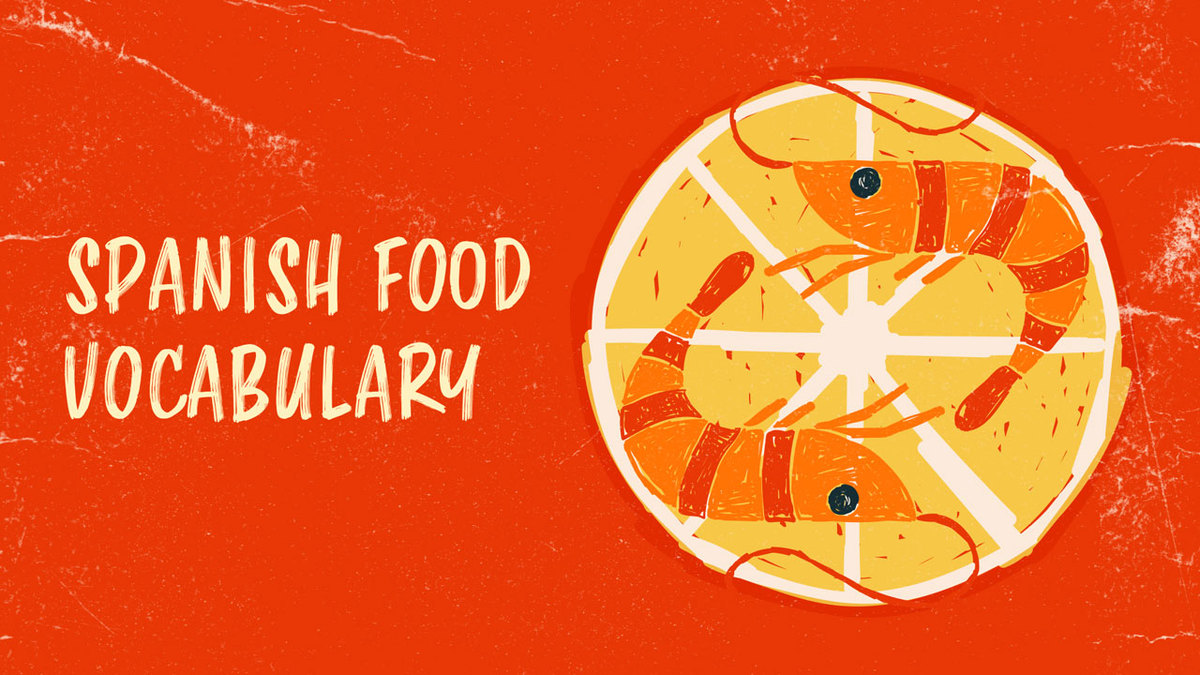
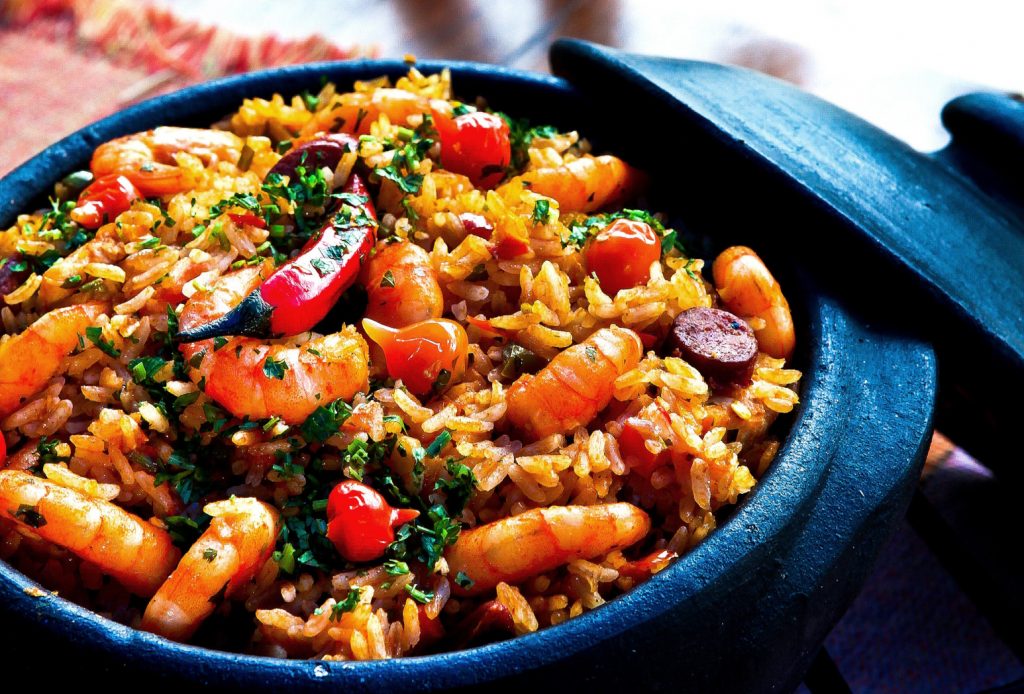
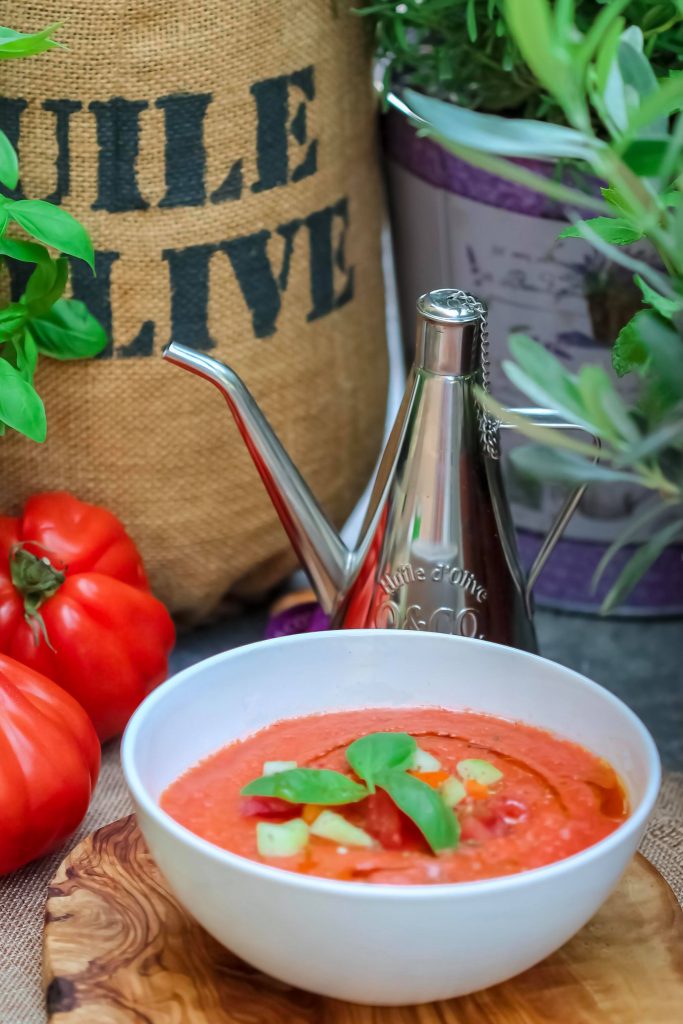
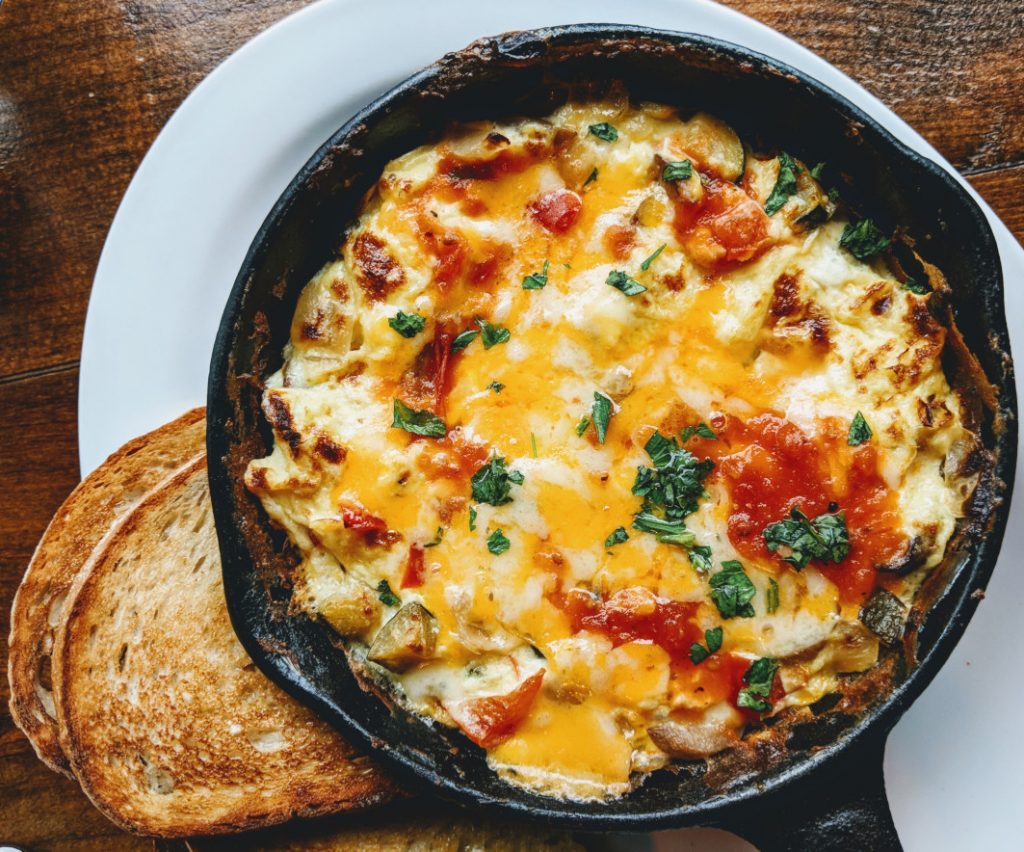
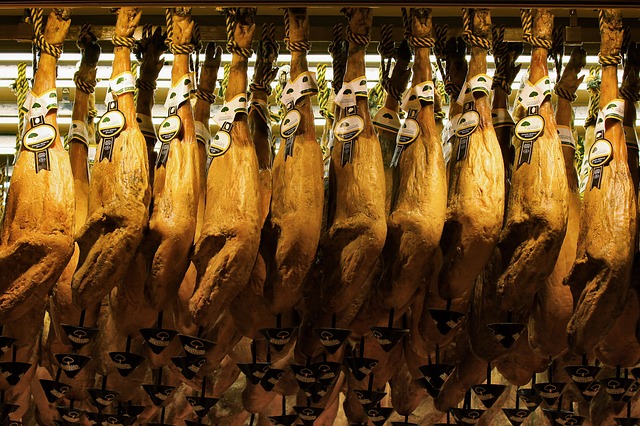
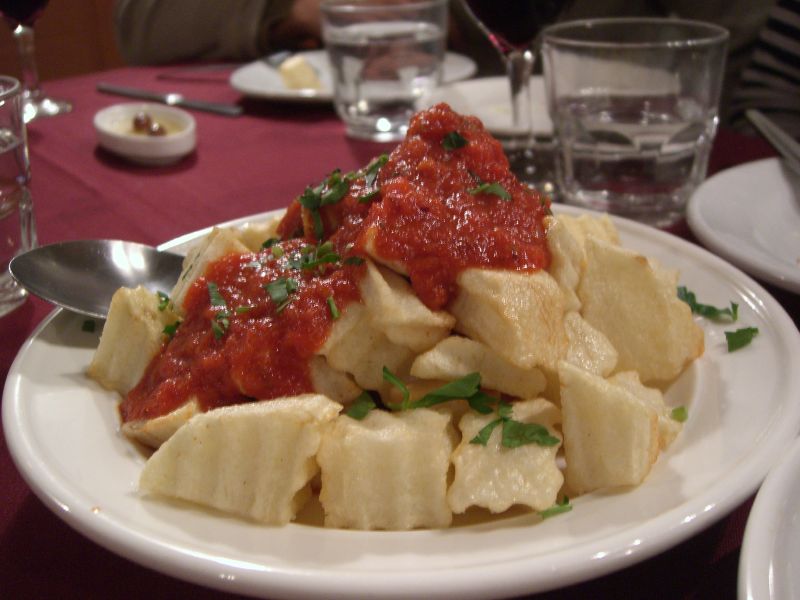
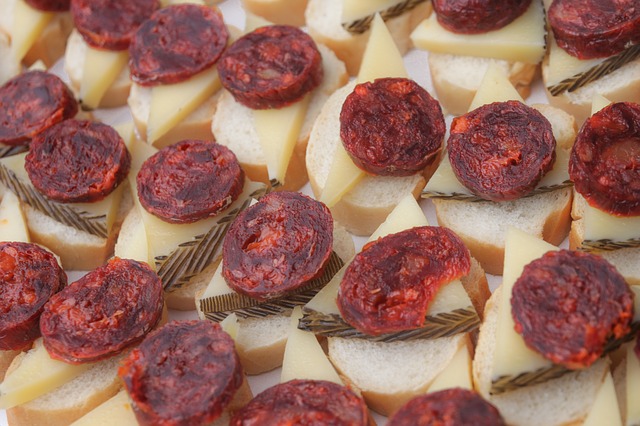
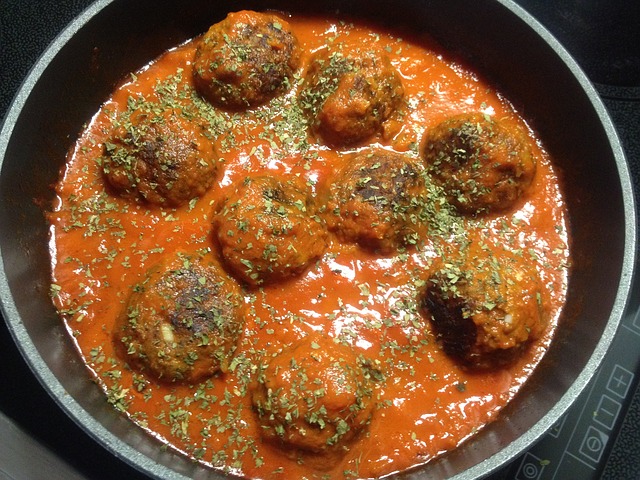
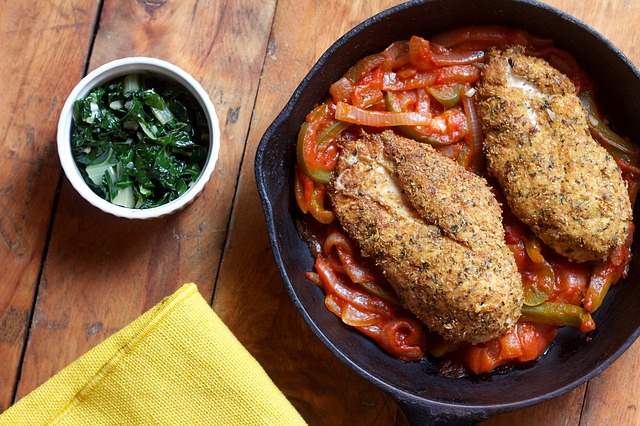
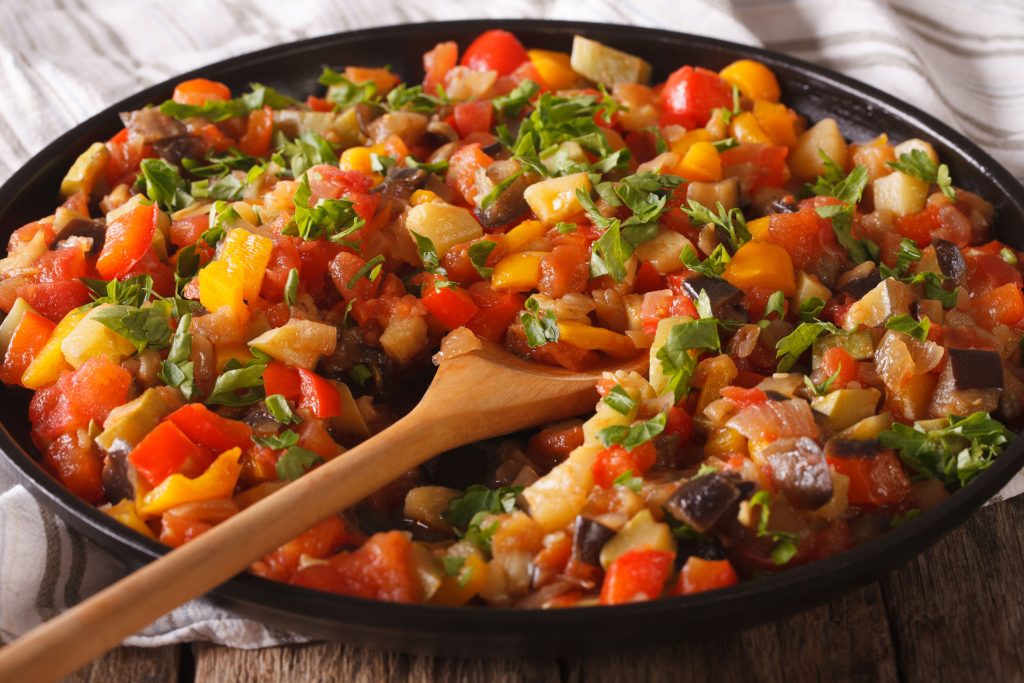
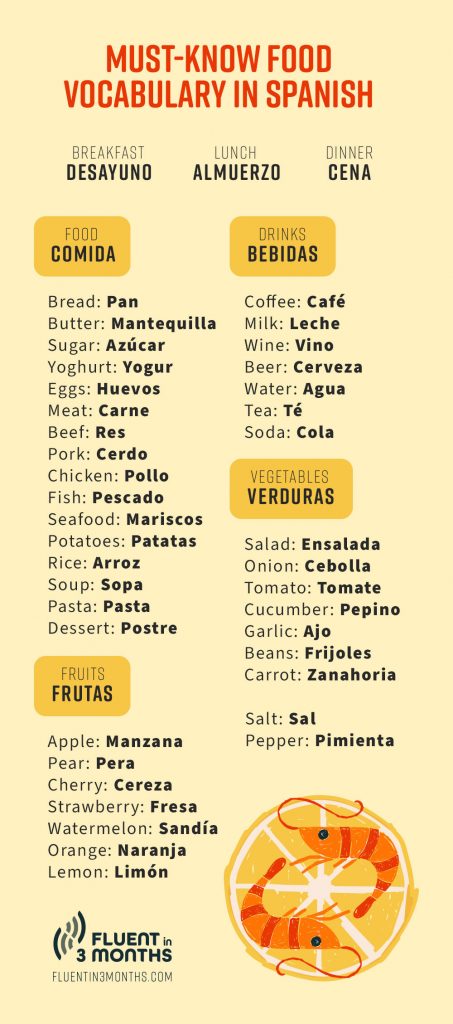

Social